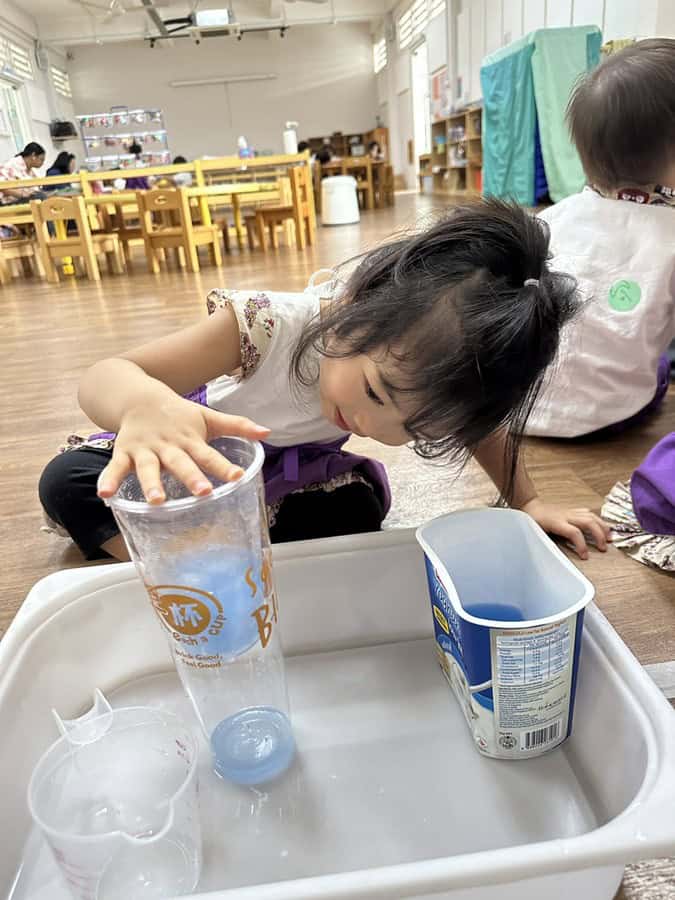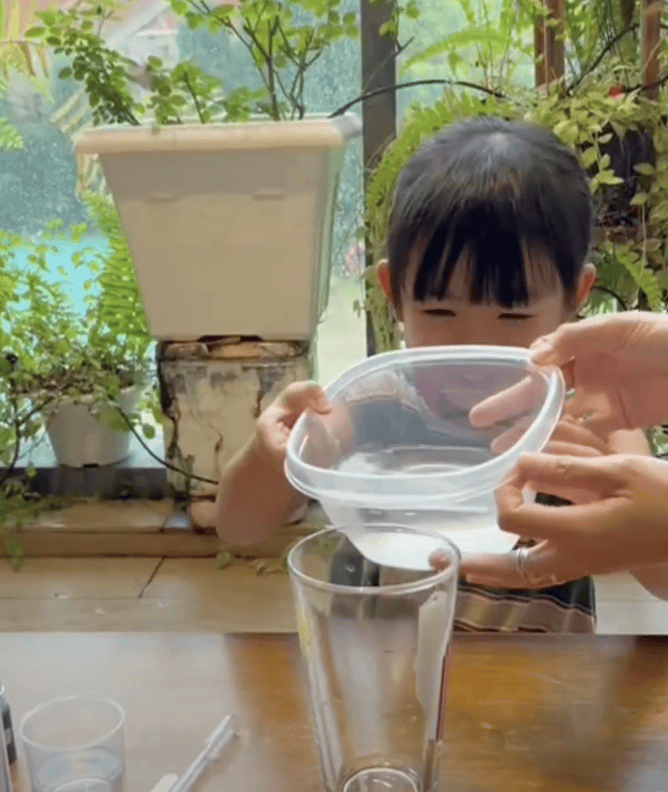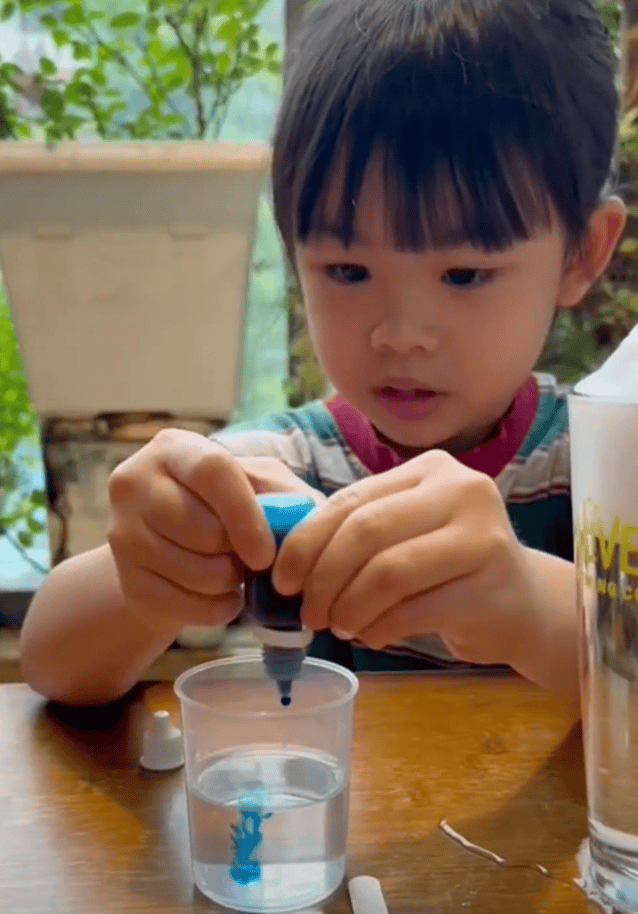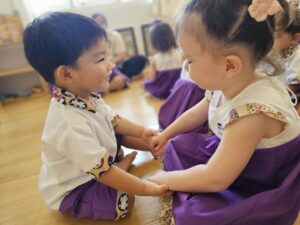This Montessori at Home activity will guide you through making Rain Clouds using simple ingredients commonly found at home! This fun experiment helps explain to your child how rain forms in clouds, fostering curiosity and a love for exploration and discovery.
Recently, the children at House on the Hill explored this thematic topic in their Mandarin class. By learning about rain in Mandarin, children not only develop language skills but also gain a deeper understanding of their world and its cultural significance. This activity encourages critical thinking by allowing your child to make choices and experiment with different outcomes. This process promotes independence and decision-making skills, while hands-on experiences instil a lasting interest in science and the natural world.


Materials Needed
- Shaving Foam
- Glass
- Food Colourings of Choice
- Dropper or Spoon
- Water
Instructions
Step 1: Fill the clear glass about three-quarters full with water.

Step 2: Shake and spray a layer of shaving foam on top of the water.

Step 3: Add a few drops of your choice of food colouring in a separate bowl of water, you can have multiple colours too.

Step 4: Drizzle the coloured water droplets onto the “clouds”.

Step 5: Watch as the rain falls!

Watch as Mia and her family create her version of a rain cloud at home.
Simplifying the Concept
- Cloud Formation – Clouds are like shaving cream floating on water. They are made of tiny water drops that are so light they can float in the sky.
- Condensation – When you add food colouring to the shaving cream, it’s like adding more water drops to a cloud. These drops join together and get heavier, just like in a real cloud.
- Rainfall – When the food colouring gets too heavy, it falls through the shaving cream into the water below. This is how rain falls from clouds when the water drops get too heavy to stay in the sky.



The Importance of Learning About Rain in Mandarin
Learning about rain in Mandarin is vital for several reasons:
- Language Development: Understanding weather-related vocabulary enhances language skills, helping children express themselves more effectively in Mandarin.
- Cultural Relevance: Weather plays a significant role in daily life and cultural practices in Mandarin-speaking regions. Learning about rain connects children to cultural contexts and traditions.
- Critical Thinking: Discussing natural phenomena like rain encourages inquiry and critical thinking, prompting children to ask questions and explore their environment.
- Scientific Literacy: Integrating Mandarin with scientific concepts fosters bilingual scientific literacy, preparing children for a globalised world.
- Enhanced Communication: Learning about rain in Mandarin equips children with the language skills to communicate effectively with Mandarin-speaking peers and adults, enriching their social interactions.
- Curiosity and Exploration: Exploring weather concepts in another language nurtures a sense of wonder and encourages exploration, enhancing overall learning experiences.
By learning about rain in Mandarin, children not only gain language skills but also develop a deeper understanding of their world and its cultural significance.
This experiment not only visually demonstrates how rain forms in an engaging way but also encourages your child to think critically and ask questions about the natural world. By fostering curiosity from an early age, you can cultivate imagination and spark creativity, leading to a deeper understanding and appreciation of the environment. Furthermore, this activity nurtures a sense of wonder and exploration, laying the foundation for lifelong curiosity and learning.
Enjoy exploring the science of rain together!








